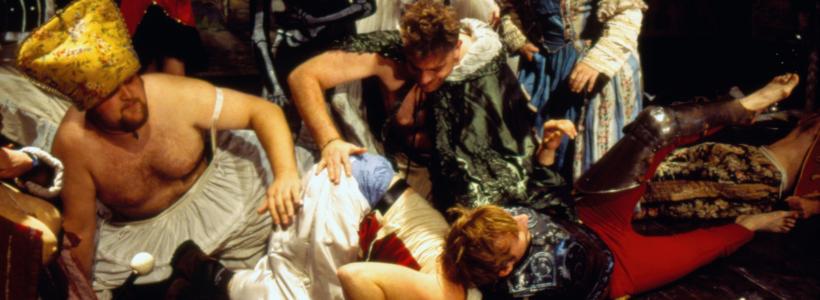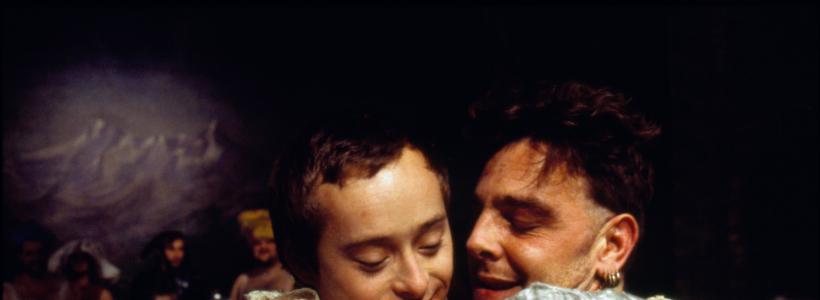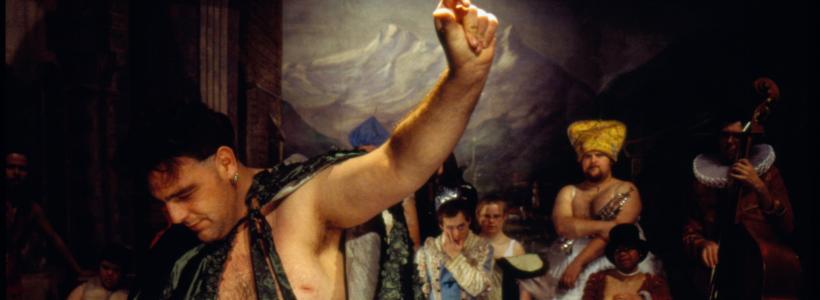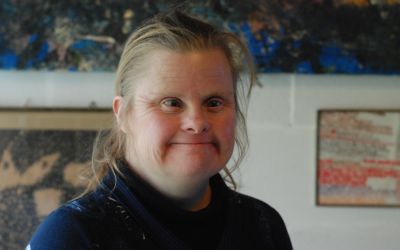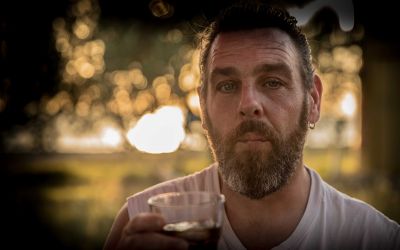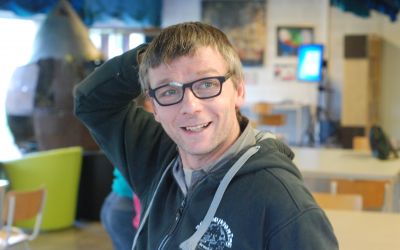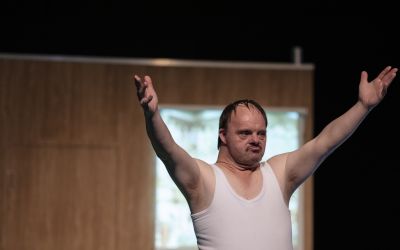Inspiration and theme:
Don Quichot, the man who catapults himself rashly into knighthood, and Oblomov, the man who dreams of one day devoting himself completely to something but who can’t get out of bed, are total opposites and are our inspiration sources. The one dreams about living, the other lives the dream.
In essence the performance touches a number of timeless and at the same time very current reflections about the responsibility, the side the actor, theatre producer, artist does or doesn’t take. Is the jester the only one that can tell the truth or is the jester first and foremost an entertainer? Can an artist bring about social change and should he devote his art to this or should he stay away from political forums?
Even we sometimes idolize the meaningless, the non-permanent, the useless character of our theatrical art and do we do this then because we see the futility of it ourselves? Despite the hunger in the world, the threat of violent groups, the planet that is getting sicker by the minute we remain busy organizing a play that we want to perform for and with the audience. And the organizing and developing of this play we do with an excruciating abandon. We throw ourselves into it with risk to life and limb, we don’t appear to have any other choice.
Like children we immerse ourselves in an illusion that seems to span the world. In their acting the Stap-performers have kept a disarming honesty, a naivety, a childlikeness. From Picasso to Stravinski, many artists have looked their whole lives for the eyes and the impulsiveness of a child. The childlike belief in the truth of the play and the quest of the artist for the truthfulness in his work and life. The most lived in reality is that of the imagination.
Don Quichot is a monument, an icon, bigger than life, and at the same time very recognisable and vulnerable, a man after our own heart. Don Quichots fascination for the heraldry of the wandering knight is being met with jeers by his peers. He finds himself outside the spirit of the age with his ideals. He knows this only too well. He even realises that you have to be a little crazy to start such an undertaking, but he would rather be an eccentric oddity who lives by what he’s passionate about than be a well adjusted individual without passion, without a story.
... ‘But’ said Sancho, ‘what will your Honourable be doing here then in this Godforsaken and abandoned place?’ ‘Didn’t you get it yet’, answered Don Quichot, ‘that I want to follow the example of Amadis and want to play the desperate, the insane and the rambling, following the footsteps of the brave Roeland at the same time, when he found the evidence at source that the beautiful Angelica had perpetrated an indelicate act with Medoro (…)’. ‘It seems to me’ said Sancho, ‘that the knights who did those kind of things, had reason and cause for such foolishness and penitence, but what reason do you have your Honourable to act the fool? (…) ‘But that’s the beauty of the matter’ answered Don Quichot, ‘and here lies the loftiness of my undertaking; because when a lone wandering knight goes mad with reason, there isn’t the any merit in it: the point is that I am going insane without any cause, in order to make my wife realise, that if I am this mad without, I could be even more crazy with cause.’ ...
Concept and process :
The basic idea is to double all the parts. Stap-performers are opting for images and movement. Their alter egos, the able-bodied actors find themselves amidst a verbal joust. In this way the Stap-performers are able to inspire the verbal actors by their actions. In this way the able-bodied actors can influence the Stap-actors verbally. Within this concept as much freedom as possible is created whereby the inspiration of the moment comes first.
In this set-up the play should be found through the interaction. Unlike previous Stap-productions where the directors used the performers to make a play, here we are starting more from a collective of able-bodied and disabled actors and musicians. The actors submerged themselves for five months in a pool of absurdism and slapstick while never losing sight of the line between desire and perfection.
timeline
'Donkisjot' played for the first time in February 2006. We played in Flanders for 2 months and played 32 times for 8.065 spectators. The last time, we played at a festival in Morocco.
credits
Musicians: Stoffel Verlackt Bert Huysentruyt Jonas Van den Bossche Marc Bryssinck
Costumes: Inge Büscher
Design: Michiel Van Cauwelaert
Technical support: Erick Clauwens Bob Cornet
Photography: Maarten Vanden Abeele
Actors:
Stijn Van Opstal
Geert Van Rampelberg
Koen de Graeve
Ariane Van Vliet
Wouter Hendrickx
Guy Dirken
Ann Dockx
Seppe Fourneau
Jan Goris
Peter Janssens
Nancy Schellekens
Cathérine Springuel
Peter Van Lommel
Rik Van Raak
press
Radio 1 - Pol Arias - 6 February 2006 2006
"In the book by Cervantes Don Quichotte is fighting with horse and knight against windmills. In Donkisjot by Theater Stap in Turnhout it appears he is still a wandering knight, but in totally different surroundings."
"Yes, because here he finds himself amidst a circus. He doesn't even arrive on a horse, but he sails on stage in a boat with his servant Sancho. Immediately the misunderstandings begin, despite the fact that the circus artists had prepared the show really well ... because right at the beginning we see how the décor and the lighting is being rigged and even the magic tricks are tested. It is very nice to take a peek behind the scenes of the -we mean it here- spectacle company."
"Yes, so you see that a lot happens behind the scenes?"
"Well, it's a real company, because there are many persons on stage, isn't it, even with a real orchestra. No trouble or expenses were spared : there are nearly twenty of them. Some of them are on loan from companies like Olympique Dramatique and De Kakkewieten, but the real stars are those of Theater Stap themselves. For nearly twenty years they have been making theatre performances there with mentally disabled persons, with success, so that even other theatre companies ask for their cooperation. This has already been the case for instance for Het Toneelhuis, who helped co-produce this performance by the way.
"Yes, but it is the first time, I think, that Theater Stap is working without a director?"
"Yes, because at first there were always totally different guest directors, even choreographs who collaborated with them. Now, for the first time ever they worked, indeed, without director. A small miracle that all those different persons can put such an imaginative performance together. I admit it, in the beginning it all seems a bit chaotic, but that's how they wanted it. Even the fake ending that causes confusion, this is also witty: they are constantly trying to mislead us. And this is perfect for a individual like Donkisjot. There, that's it, it isn't difficult to separate fact from fiction, euh, in his head, and that is also the theme for this production, almost superb… throughout almost half of the play, with circus acts that aren't real acts, with a Donkisjot who doesn't realise that the act by the artists isn't a real act and even the performances by the mentally disabled themselves that are getting a double layer here. I am surprised by the daring and the guts in this production, by the honesty and the not covering up of this rather sensitive reality."
"And you mentioned just now also a show with a lot of imagination?"
"It is overflowing with imagination with a marvellous décor by Michiel Van Cauwelaert, with really sublime costumes, you just can't stop looking at Inge Büscher, with spattering music, with actors that make you shriek with laughter and indeed clearly is that "ridderkul" (knight rubbish), because that's how the call it, rhymes with "ridicuul" (ridiculous). Actors they, and again this is touching the fools, are having visible fun with all those tricks“ like those with falling and getting up, at first very seriously, then with wit, performing for us for an hour and a half. It is a performance with an optimistic side."






